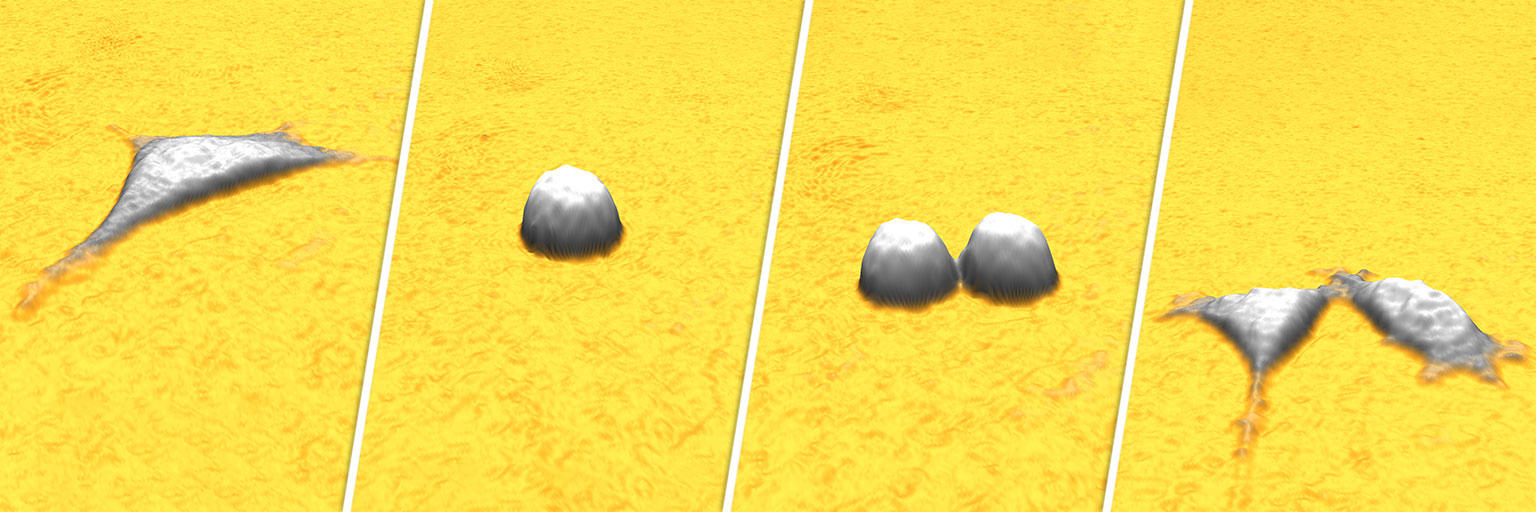The Cell Cycle
The cell cycle and its phases are one of the most central concepts within cell biology. It comprises a series of well-defined events that a cell goes through in order to copy its genetic content and divide into two identical daughter cells. This cell division is a basic feature of life. All eukaryotic cells, that is cells with nuclei, go through the cell cycle in order to divide. Even though it differs in some aspects between animal cells, plant cells and fungi, the overall procedure is similar between them.
The main phases of the cell cycle
The cell cycle is usually divided into four main phases. The first three phases are often referred to as the interphase, and they prepare the cell for the fourth phase — mitosis.

G1 phase – cell growth
The cell grows in size and increases the production of mRNA, protein, and cell organelles in order to prepare for later stages.
S phase – DNA synthetization
The mRNA and protein production is lowered and the cell focuses on replicating all of its DNA, creating one copy of each chromosome. The two identical copies, called sister chromatids, are attached to each other at a point called the centromere.

The classic depiction of a chromosome. The DNA has been replicated, so the chromosome consists of two identical sister chromatids joint together at the centromere.
G2 phase – preparation for cell division
The cell continues to grow and synthesize proteins and organelles necessary for the last phase.
M phase – daughter cell formation through mitosis
The nuclear membrane breaks to release the chromosomes. The sister chromatids are separated and form two identical nuclei pulled to opposite sides of the cell. It then splits the cell membrane and cytoplasm into two equal parts, dividing the DNA and cell organelles between them. Two genetically identical daughter cells have been created.

Leaving the cell cycle – G phase
After the cell has completed the M phase, both daughter cells enter the G1 phase again. From here, they can either continue the cell cycle and divide again or leave it and stop dividing. A cell that exits the cell cycle enters the G phase, where it is still fully functional but does not divide anymore. Some cells never leave the G phase again, like most neuronal cells, whereas others can re-enter the G1 phase and continue the cell cycle if necessary. Like most epithelial cells, some cells never enter the G phase but continue to divide throughout their lives.
Cell cycle checkpoints
To ensure that each phase of the cell cycle is carried out correctly, essential steps are followed by a checkpoint. It is a control mechanism where certain conditions must be met before the cell can progress to the next step. Checkpoint failure induces cell cycle arrest, preventing the cell from proceeding until it has solved the issues.
The cell cycle includes several checkpoints, where the major ones are the G1, G2 and M checkpoint.
G1 checkpoint – size and nutrient verification
This checkpoint, also called the restriction checkpoint, takes place between the G1 and the S phase. The cell verifies that it is large enough to divide, that its DNA is intact, and if there is enough access to nutrients and stimulating growth factors. If it passes the G1 checkpoint, it irreversibly commits to complete the whole cell cycle and divide. If not, it tries to fix what fails or enter the G phase and wait for more favorable conditions.
G2 checkpoint – DNA quality control
After the second growth phase, the cell checks that the DNA was completely and correctly replicated during the S phase. If it passes it enters the M phase, and if it fails it tries to correct the errors. If the cell is unable to repair the DNA, it undergoes apoptosis. This prevents it from passing the damaged DNA on to the daughter cells.
M checkpoint – nuclear division setup check
This checkpoint takes place during the M phase. It is also called the spindle checkpoint because the cell examines whether all sister chromatids are correctly attached to the spindle microtubules that separate them. If not, the cell pauses mitosis until all sister chromatids have been attached in the right way.
Cell proliferation – cell division and cell growth
Cell proliferation is a term tightly linked to the cell cycle, meaning the process that increases the cell number through cell division and cell growth. While cell division is necessary to increase the cell number, cell growth is also essential as the parent cell losses half of its material when it forms a daughter cell.
The purpose of cell proliferation is to enable tissue growth and development and then maintain a healthy cell population in the mature organ. When old and damaged cells die and get eliminated, the remaining cells proliferate in a strictly regulated way to replace them. This ensures that the total number of functional cells is kept the same. Failure in this regulated process, leading to cells that continue to proliferate uncontrollably, is a cause of tumors and cancer.
